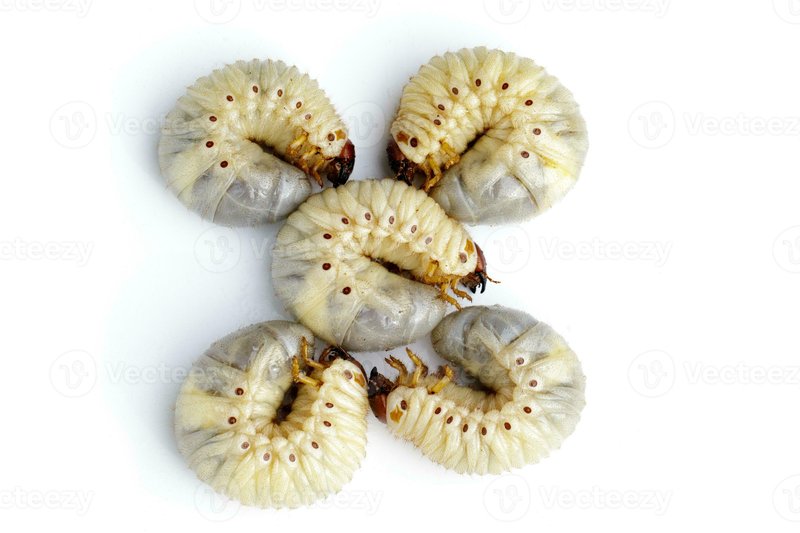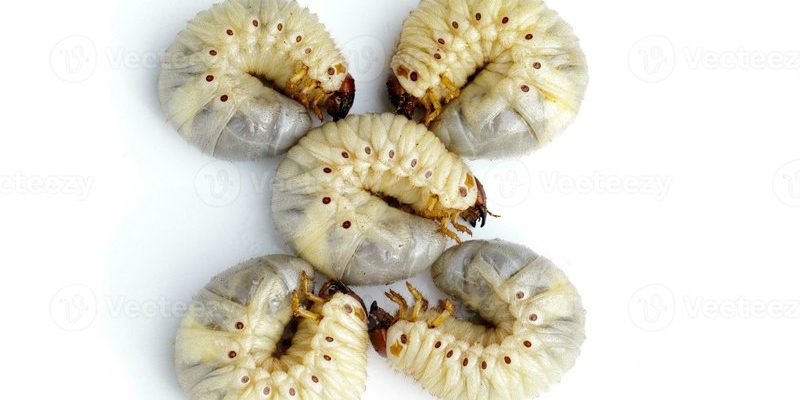
Grub worms, which are actually the larvae of beetles, have fascinating life cycles that adapt to their environment. Much like how we bundle up for the cold, these little creatures have their own strategies for surviving the colder months. So, let’s dive into the world of grub worms and figure out what happens to them when the temperatures drop.
What Are Grub Worms, Anyway?
Grub worms are the larvae of various beetle species, most commonly the Japanese beetle and the masked chafer. They’re typically white, C-shaped, and have a soft body with a brown head. These munching machines are often found in lawns and gardens, feasting on the roots of grass and other plants. Think of them as the gardeners’ little pests, doing their best to break down organic matter and recycle nutrients back into the soil.
You might be wondering how these little guys fit into the bigger picture of the ecosystem. Grub worms play a vital role in the food chain. They serve as a food source for birds, mammals, and even other insects. So, while they might be a nuisance to your lawn, they’re pretty important in their natural habitats.
Do Grub Worms Hibernate?
Here’s the thing: grub worms don’t exactly hibernate in the way that some animals do. Instead, they enter a state called *diapause*. This is a kind of dormancy that allows them to survive harsh winter conditions. When the weather gets cold, grub worms slow down their metabolism and become less active. They burrow deeper into the soil, often at a depth of about 4-12 inches, where temperatures are more stable and they’re less likely to be affected by freezing air.
During this time, they rely on stored energy, much like how we might save our holiday treats for later. They won’t eat or grow until the soil warms up again in spring, at which point they’ll emerge to continue their life cycle. So, while they’re not hibernating in a cozy nook, they’ve got their own way of dealing with the cold.
How Do Grub Worms Prepare for Winter?
As temperatures start to drop, grub worms begin prepping for the chill. They sense changes in the environment through temperature and moisture. This is kind of like how we know to grab a jacket when we feel a breeze. Grubs start moving deeper into the soil to avoid freezing temperatures and are less likely to be disturbed by hungry predators.
One of the most interesting things about this process is how they respond to soil conditions. If the soil is too dry, they’ll tuck away deeper to find moisture. If it’s wet and rainy, they might stay closer to the surface for a little longer. It’s all about finding that perfect balance between safety and comfort as they ride out the frost.
Why Does This Matter for Your Lawn?
Understanding the behavior of grub worms during winter is crucial for homeowners and gardeners alike. If you’re trying to keep your lawn healthy, knowing that these pests are underground is good news. It means you won’t see any active feeding in your grass during the colder months, which gives you a break from worrying about lawn damage.
Once spring arrives, however, that’s when it becomes important to keep an eye on them. Their emergence can wreak havoc in lawns as they start feeding again. Noticing signs of damage early can help you take action before they cause significant harm. This might include introducing beneficial nematodes or using natural treatments to manage their population.
How to Manage Grub Worms in Your Yard
Knowing that grubs do come back in the spring means you’ll want a plan for managing them. Here are some steps to keep them in check:
- Regular Lawn Maintenance: Keep your lawn healthy through routine mowing, watering, and fertilizing. A strong lawn can better withstand grub damage.
- Beneficial Nematodes: These tiny, microscopic worms can be introduced to your soil. They specifically target grubs and help reduce their population naturally.
- Traps and Barriers: Using traps can help catch adult beetles before they lay eggs in your lawn. Barriers like black plastic can also keep them from emerging.
- Chemical Treatments: If necessary, there are insecticides available that target grub worms. However, use these as a last resort, as they can impact beneficial insects.
By implementing these strategies, you can minimize the impact of grub worms and keep your lawn looking its best.
What to Expect in the Spring
As winter ends and spring approaches, you can expect grub worms to become more active. They’ll begin feeding on roots again, and this can lead to noticeable lawn damage. You might see areas of your yard that look brown or unhealthy. If you’re aware of their lifecycle and spring habits, you’ll be better equipped to tackle any issues head-on.
Monitoring your lawn for early signs of damage can help you address grub worm problems before they escalate. Checking your soil regularly and being proactive means you can maintain a healthy lawn even during peak grub season.
So, do grub worms hibernate during winter? Not exactly, but they do enter a state of dormancy, ensuring their survival until spring. Understanding their behavior is essential for anyone looking to maintain a healthy yard. By knowing how they prepare for winter and what to watch for in the warmer months, you can manage their presence effectively.
Whether you’re keen on protecting your lawn or just curious about these fascinating little creatures, now you’ve got the scoop. With this knowledge, you can rest easy knowing what happens to those gray, wriggly worms while you enjoy your cozy, warm winter!

